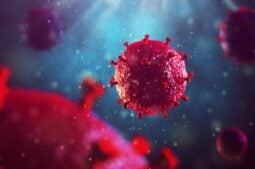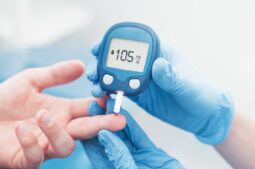

When pregnancy results from In Vitro Fertilisation (IVF) there is a higher than average chance of conceiving twins. Multiple births are common in this kind of infertility treatment as multiple eggs are fertilised at the same time and transferred back into the uterus. Historically this has resulted in the highest chance of falling pregnant, though strides are being made every day towards being able to minimise the possibility of multiple births. There are two sides to multiple births. A positive is that where a patient has been striving to conceive for years hoping to start a family, having two or more children at once may be a blessing. An unfortunate aspect of multiple births is that they often result in babies with lower than average birth weight or other complications. Through single embryo transfer (SET), IVI are pushing towards an option with the highest chance of conception for the patient and the healthiest chance at life for the baby.
Difference between single and multiple embryo transfers
When IVF resulted in the birth of Louise Brown in 1978, it began to be seen as a viable option for couples suffering from infertility. Problems such as blocked fallopian tubes, endometriosis, or simply a decline in fertility due to the patient’s age may all be addressed by IVF. It is possible to use donor eggs and sperm, or to stimulate the production of eggs in the patient through hormone injections. If the patient has chosen to preserve eggs at an earlier age, they may be used in the IVF process – it does not matter whether the eggs used are recently collected or previously frozen.
To give the patient the best possible chance of fertilised eggs implanting into the lining of the uterus, multiple embryos are transferred. This means that should one or more fail to implant, the other(s) may still do so. Given the cost of undergoing IVF, financially, emotionally, and the amount of time needed for each cycle, this was long considered to result in the best chance of a pregnancy. However, since 2016 IVI has been working towards being able to focus on SET. IVI hopes to reduce the rates of falling pregnant with twins by employing new techniques in the field of IVF.
Risks of multiple embryo transfer
Some patients still prefer a multiple embryo transfer (MET), even though there are increased risks for babies born as a result of the process. Multiple births have been linked to babies with lower birth weight, perinatal and infant mortality, pre-term delivery and disability. The risks involved in multiple births are higher than in single births, and with new developments in the field of assisted reproduction treatments it is possible to avoid these risks by opting for SET. The patient’s chances of falling pregnant can be preserved even with a single embryo. A higher rate of success for that single embryo means that patients keen to minimise any risk may opt to avoid multiple embryo transfers.
Though the idea of a multiple birth may be attractive for some patients, there are also risks for the mother associated with these pregnancies. It is not unusual for the pregnancy to be more difficult than with a single foetus. This is due to the significant increase in hormones and growth that result from the duplication. Only around 3% of spontaneous pregnancies result in multiple births, meaning that they are a rare occurrence. With IVF treatment the chances of multiple pregnancies can be as much as 33%, a huge increase on unassisted pregnancy. While the human body can sustain a healthy pregnancy with multiples, the associated risks are just not worth running if it is possible to avoid this outcome.
The move to single embryo transfer
European infertility treatment centres including IVI have been working to make SET the new norm. There are tests that can be carried out on fertilised eggs to select the most viable candidate. Compatibility Genetic Testing (CGT) is also available as a way of screening out genetic abnormalities during the process. By testing the compatibility of the donor or patient’s gametes it is possible to test for roughly 600 common recessive autosomal disorders. Reducing the chances of the implanted egg resulting in a foetus with genetic abnormalities gives the single embryo a higher chance of developing healthily than in previous versions of the treatment.
Time lapse technology can also be used, and this is likely to become more of an industry standard moving forward. This makes it possible to monitor the development of embryos being cultured by means of computer analysis and algorithms. This means that rather than being physically taken out of the incubator for regular visual inspection, the embryos can stay in the best possible environment for as long as necessary before being transferred into the patient’s uterus. Meanwhile, development is reliably monitored and any issues can be flagged up. Time lapse technology can also identify embryos at risk of chromosomal abnormalities.
Another option is blastocyst transfer. A blastocyst is an embryo that has been able and allowed to develop for between five and seven days before being implanted back into the uterus. By this point it has already cleared some hurdles, and a blastocyst is much more developmentally advanced than an embryo. Taking just a few days longer to allow for this development to occur significantly raises the chances that implantation will lead to pregnancy. IVI’s research shows that roughly 50% of embryos successfully develop into blastocysts, so is it easy to see that transferring a blastocyst instead of an embryo will logically yield a greater number of pregnancies overall.
IVF is a worthwhile and life-changing option for many couples or single women suffering infertility, offering the chance to conceive a biological child where previously this may have been an unfulfilled longing. In the past multiple births were more common with this treatment, but advances in new techniques and technology are helping to continuously reduce the likelihood of multiples and associated risks. Should they wish, IVF patients can eliminate any concerns about multiple pregnancy, leaving them free to pin their hopes on a single embryo transfer.




2 Comments
I want to know about multiple preganacy .
Can we do ivf for multiple pregnancy .
At IVI we recommend a single embryo transfer (SET) to avoid multiple pregnancies for the risks these can produce to both the mum and the babies.